I thought I’d start off my first Muddy Colors post with a bit of an introduction. By sharing some insight about my painting process, my hope is that you will get to know a bit about me as well.
I’ve decided to focus on my personal work process in this post – the Spontaneous and Responsive Process I use to create an image. I feel like I should note that I come from an academic background, and I do believe that practicing is remembering and that what we have stored up by practicing will come out in our work.
My process has morphed over the years, and I’ve always sort of felt that it can be tough to truly describe a painting process in words or even to describe the results or finished product of it. The description *is* the painting, and maybe words won’t ever truly be able to describe the actual experience quite as well as the finished painting does, or actually experiencing the process would. But I felt compelled to write a bit about it to explain a short video that I posted recently in which I show a painting of mine morphing from abstract marks to the finish. As most experiences posting on social media happen, I learned a bit from it, and will take what I learned to help to form what I share and how I share it in the future.
This painting is called Veno, is 24×30″, oil on canvas. Here is the video:
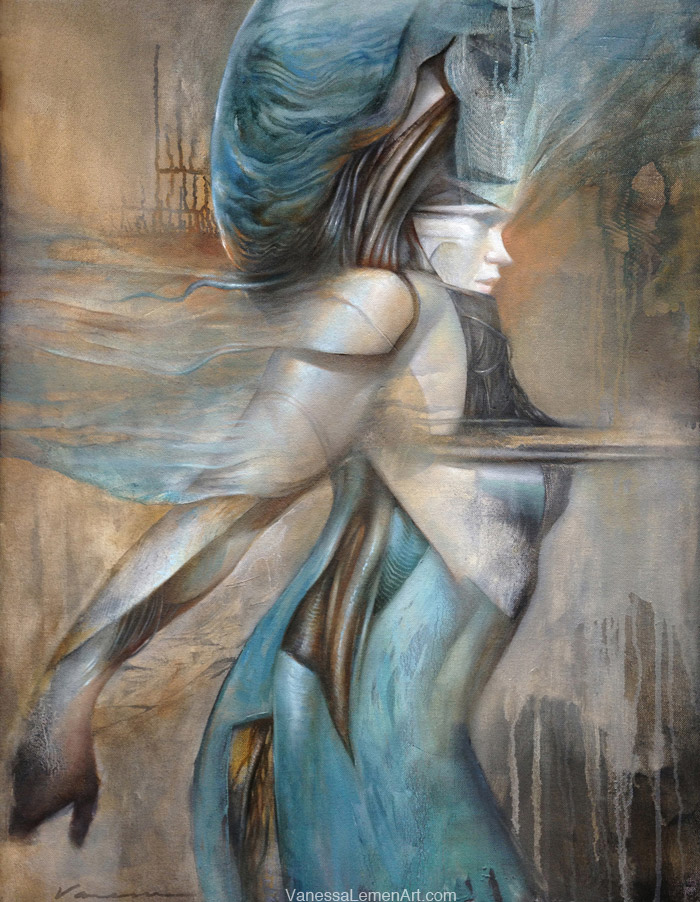 |
| Veno, 24×30″, oil on canvas |
The brief snippet of an Alan Watts lecture in the audio was chosen because I felt it fit perfectly with what I believe to be happening during the making of a painting. I am a strong believer in what happens in our lives being connected to what we produce in the form of art, so lectures on life and philosophy are just further extensions of what we can glean and inject into our art experience.
For example, I have been sketching in books, painting over text lately, and over time the words began to come forward as if they wanted me to hear what they had to say. At first, I was using them as an aesthetic element or texture to peek through the art I’d paint onto them, but as the pages developed, it was as if the words were begging me to pay attention, forming vertical sentences down the page out of the paragraphs underneath.
They were nothing even remotely similar to the paragraphs’ original subject matter, but came from them and were formed into gems I couldn’t help but pay attention to. Of course, it was me who was doing this – it was my subconscious making me aware of my perception, and this became a huge motivation to keep delving further.
In the process of discovering those personal connections I was making, I noticed that others who saw or read the pages also felt a connection of their own. So, these little paintings have turned out to be speaking universally as well as on an intimate or personal level.
 |
| acrylic and graphite on book pages, 6×9″ |
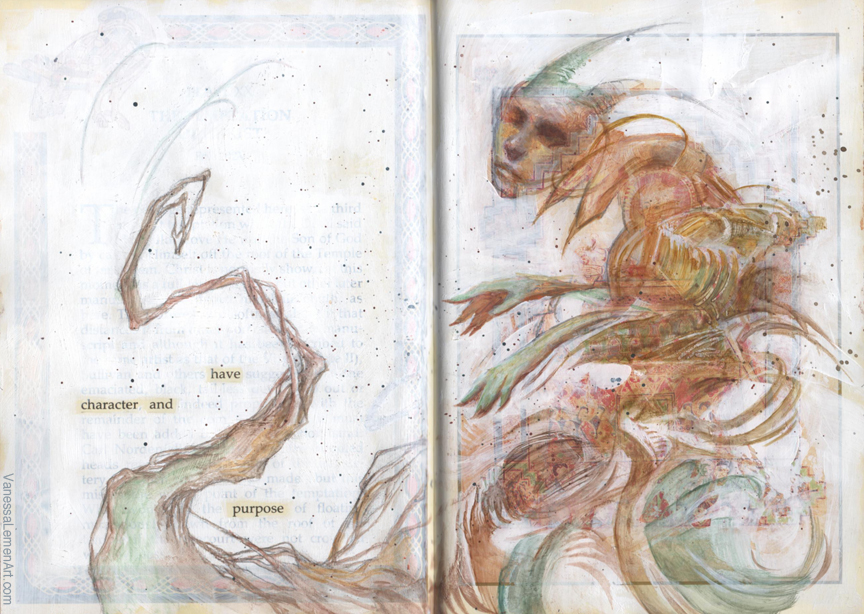 |
| acrylic painting sketch on book pages, 6×9″ |
For me, the act of painting is a dialog. It’s a form of communication that unfolds on the surface in the form of visuals, and it’s an accumulation of everything – in that moment. The dialog starts to flow when I can allow myself to delve in and, in a way, stop thinking so that the visuals, the movement, and the reciprocity of the painting experience can subconsciously combine with life experience.
In other outlets such as model workshops, instructing in a studio, or in my personal sketchbook, I draw and paint from observation, memory, and imagination on a constant basis, and am aware of my temperament based on those experiences. Being aware of this allows me to feel confident and in tune with what I want, while at the same time, be able to react spontaneously to what may happen next when I am painting in this responsive type of manner.
This sort of painting process is an ongoing interchange that includes experimenting, discovering, debating, and decision-making. Just as a conversation flows, a string of responses can form from the marks that are made on the surface. I may turn the canvas on my easel several times – vertical, horizontal, then upside-down, laid flat, then back to vertical, all the while making marks, splattering and dripping paint – each time finding something new and different, while negative and positive shapes become figures or environments, and begin to emerge and take form.
The duration of the painting’s creation is a coming together of all things – past, present, future, experience, observation, memory, imagination, knowledge, and the unknown. I work with drawings in the same way as well. They all reveal to me my own perception, what I know, what I don’t know, and what I’d like to find out.
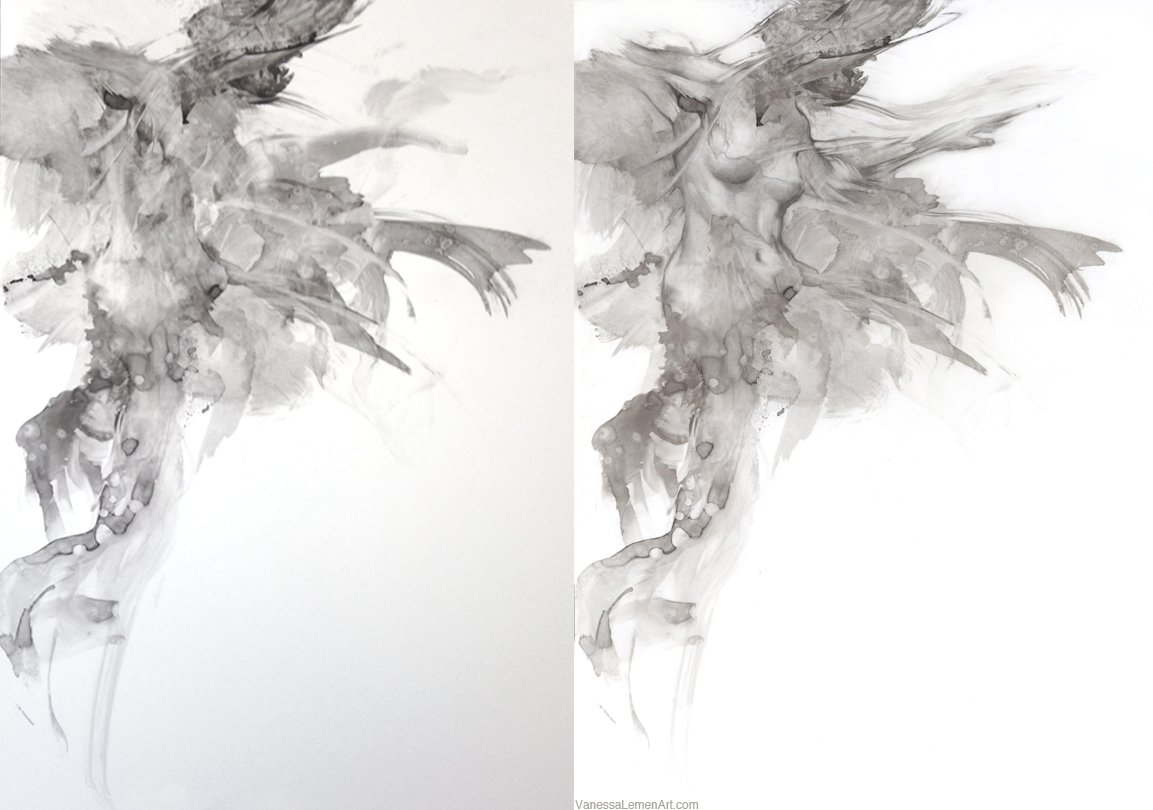 |
| Hyla, 12×16″, ink wash on yupo paper |
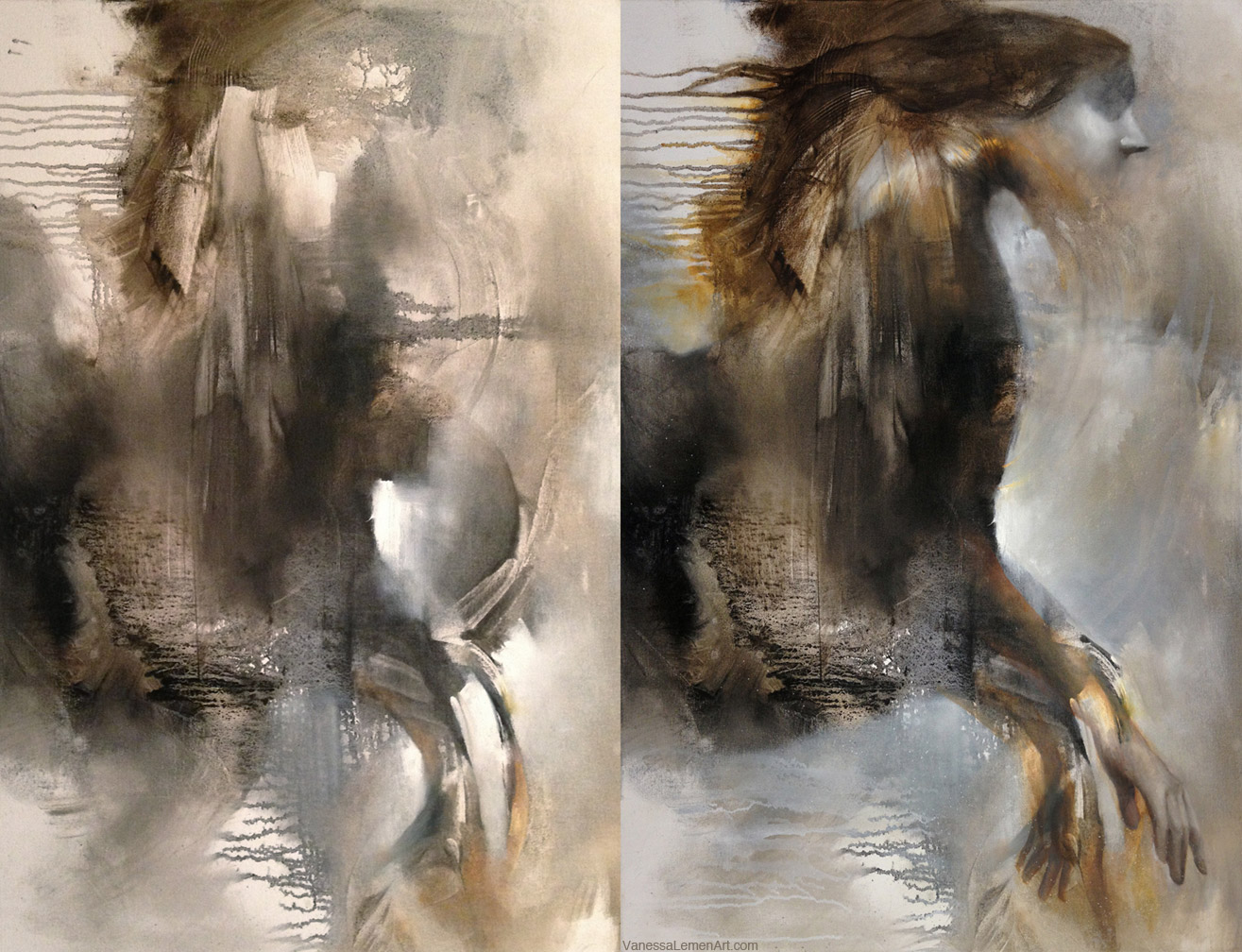 |
| Hylonome, 24×36″, oil on canvas |
There might be several iterations that many of my paintings go through before there is a strong visual that seems to sing with me. And that one I hold on to and continue a longer dialog with. Here is another progression of a painting that started from marks and evolved into a figure:
Ishi, 40×27”, oil on board
 |
| Progression of Ishi |
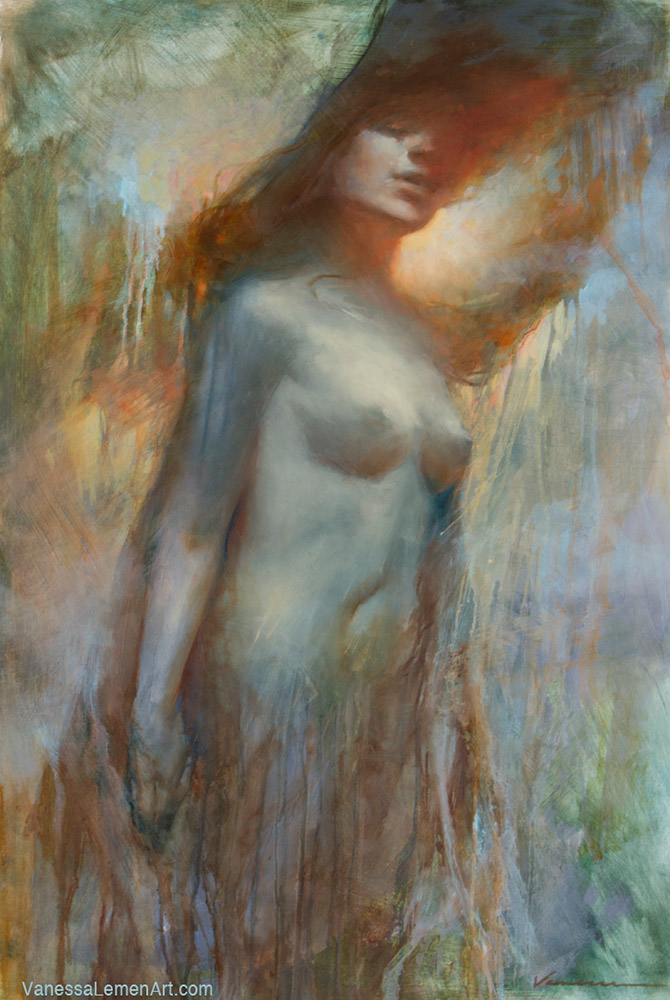 |
| Ishi, 40×27″, oil on board |
I feel a painting is finished when all the elements relate, and everything feels connected. Most times, I have several paintings going at once, in different stages, and they are set all around in my studio. Each painting is a connection to other paintings, and though they may be on separate surfaces, they form a whole as threads or pieces of fabric are part of the whole in a personal handmade quilt. Their common thread is the filter through which they were created.
My belief is this: The more open we are to the dialog we can have with our art, the greater the visual vocabulary we build by practicing and remembering, and the more connected we see all aspects of what we do and experience – that life is art and art is life, the closer we’ll come to finding the truth and making the connection we’re truly meant to be making.
 |
| my home studio |


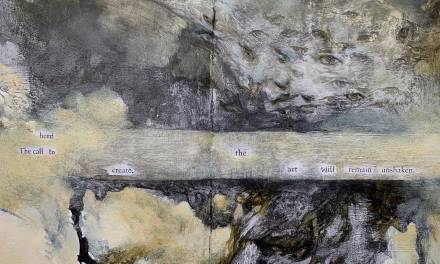
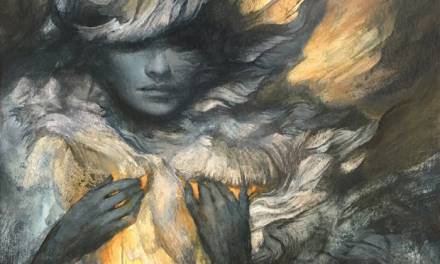
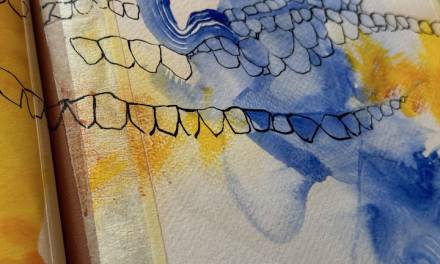
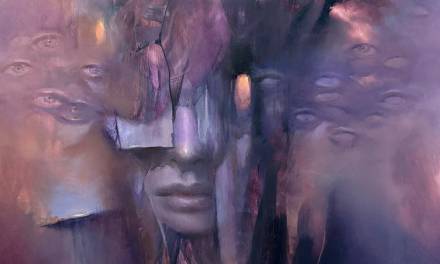

This was fascinating Vanessa. Thanks so much for the glimpse into how you create your work!
A wonderful start to what I know will be an invaluable series of posts to MC! Welcome, Vanessa!
Glad you enjoyed it, Beth. Thanks for checkin it out!
Thanks much, Arnie! Glad to be taking part here at MC!
Thanks so much for a peek into your process, it was fascinating! I love seeing how the personal pieces are put-something-down-and-respond-to-what-happens, which is so very different to the process for a client piece.
pure awesome
I love your work ! I attended Brian Froud´s class in Illustration Masterclass last year and he applies some of the same techniques in finding creature designs from random strokes. I apply the same process now, and the joy of making art now feels a lot more fun and rewarding than trying to push through with a specific idea from the beginning.
An excellent essay on the intent behind art and a marvellous style of doing it!
Thanks for taking a peek – glad you enjoyed it! I agree with you about it being so very different from the process for a client piece. It's also very different from the types of classes I teach. Most of what I say here in the post are things I'd discuss when I'm instructing – the intent, and discovery, etc.. the process has developed from a much more straightforward approach that I used to have. I really think in a lot of ways that it came from a search to get out of a routine for a bit – get away, make some marks, do something different, then I could come back to a (client) piece I was working on with fresh eyes and feeling loosened up a bit. For me, and especially in more recent years, the two different aspects of work (personal vs. client/instructing) do really cross over a lot more than they used to in that both inform the other.
Thanks! 😀
Thanks! I bet the Brian Froud workshop was a great one! Good to hear that it feels rewarding for you. Finding that groove is such great fuel for the creative process.
Thanks much! So glad you think so!
Great post! Thanks for the insight into your process.
Thanks! Thanks for taking the time to check it out. 🙂
Welcome to the Team! Thrilled to have more ladies here too!
Thanks, Lauren! Thrilled to be here! 🙂